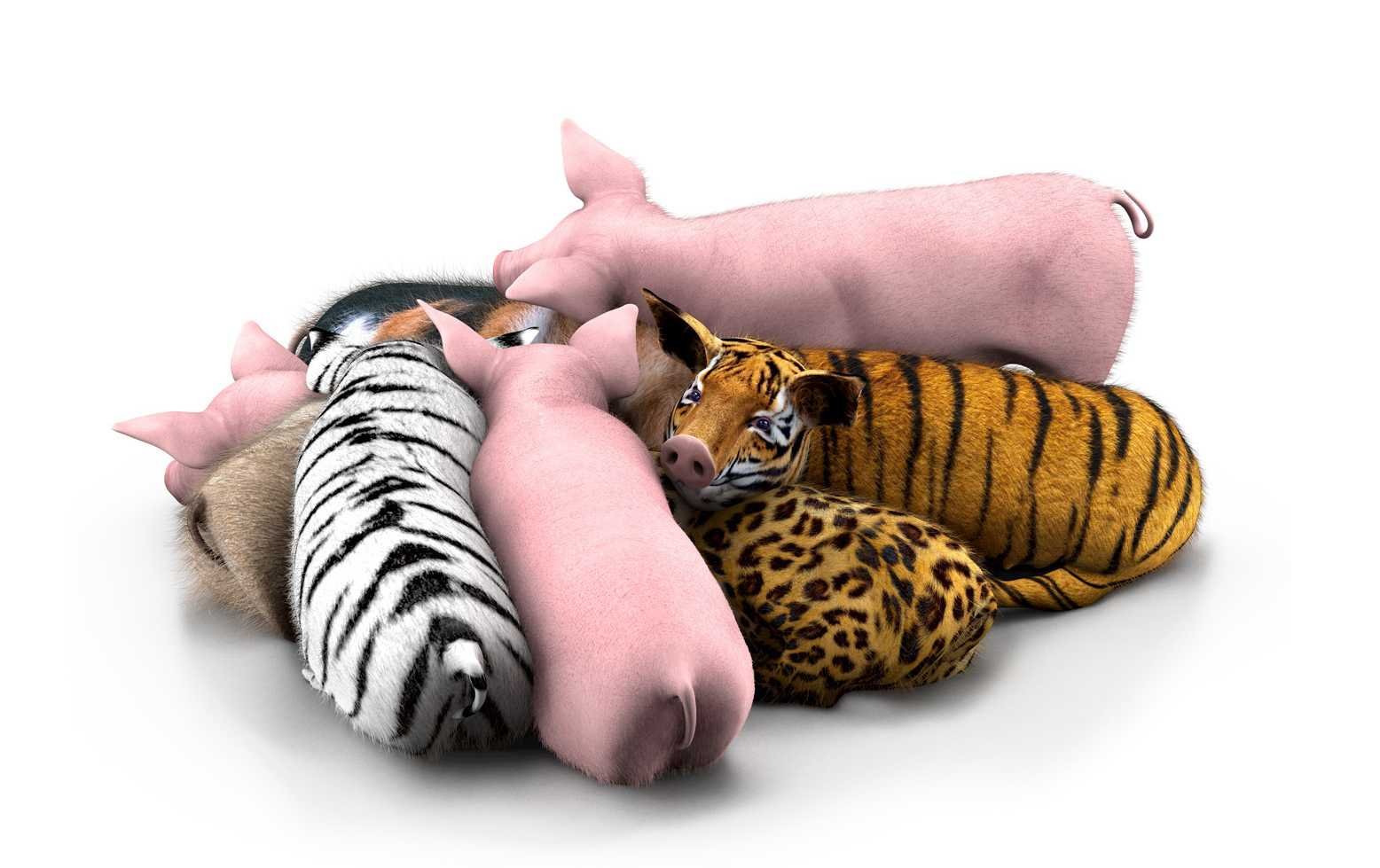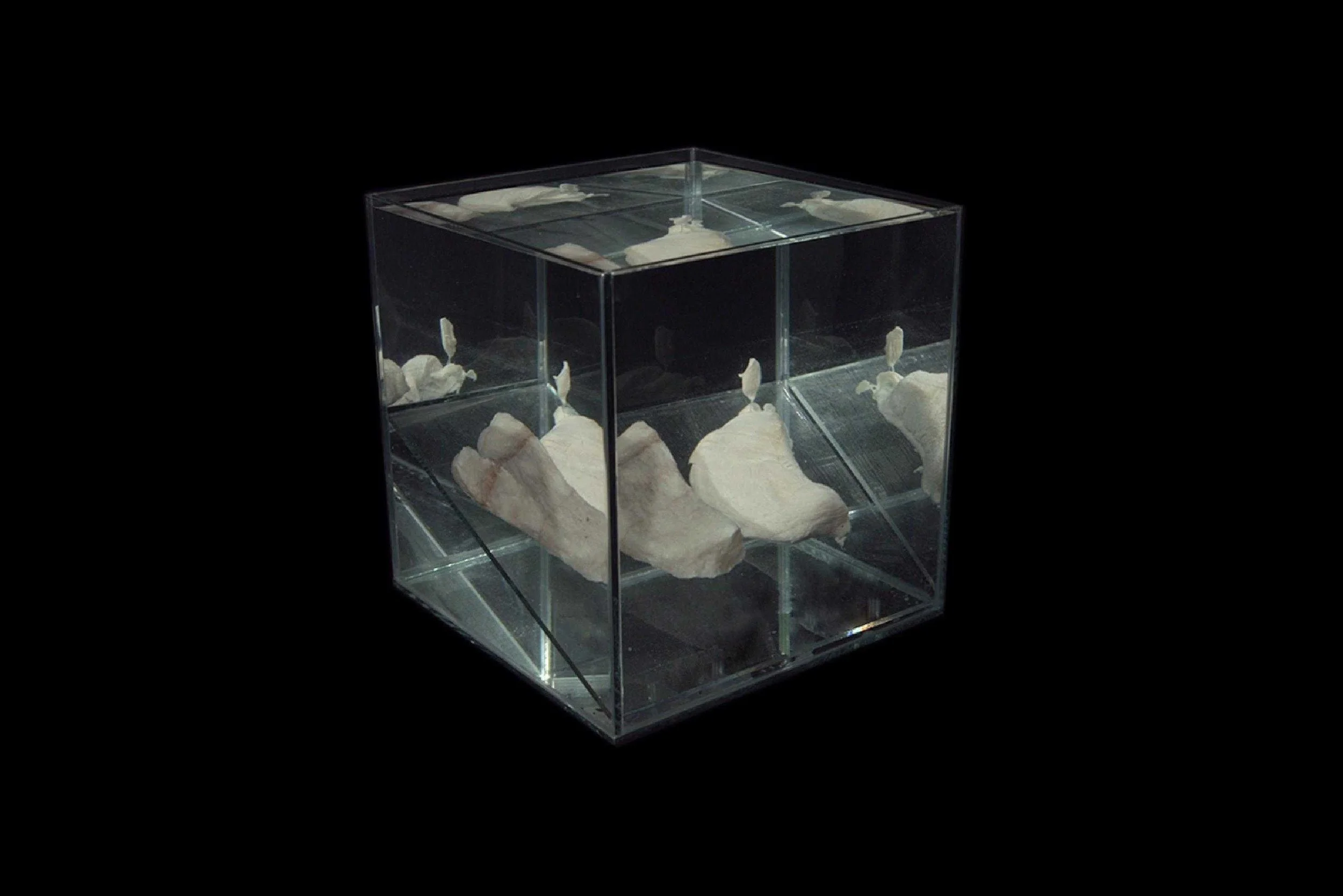Heather Dewey-Hagborg
Dr. Heather Dewey-Hagborg, an artist and biohacker, is renowned for her pioneering work in revolutionary bio-political art. Her projects, which delve into the realms of DNA, artificial intelligence, and society, have sparked significant discussions about the future of technology and its implications. In this interview, she shares insights into her journey, her groundbreaking projects, and the philosophical underpinnings of her work.
Q: Dr. Heather, let's begin all the way to the beginning and growing up years. How was life, what was academic life, and how did doing a PhD in Electronic Arts happen?
HDH: I knew from a young age I wanted to be an artist, though I wasn’t sure what it meant. Learning what it means feels like a lifelong project! In college, I became interested in the intersection of art and technology and started programming and building AI systems around 2003, which had quite a different meaning back then. I was drawn to the conceptual and philosophical questions of AI and the parallels with avant-garde 20th-century art like John Cage's, incorporating randomness and algorithms into the production of work. This interest continued and branched out; in grad school, I began thinking more politically about art and technology and the implications of working with machine learning systems. As a research-based artist, the university is a natural home for my practice, and I was happy to have the opportunity to devote myself to it during a practice-based PhD at RPI in electronic arts. Probably if I could remain a student forever, I would, as my work is always about learning new things.
Q: As you are known for biohacking and biopolitical art, what kind of concerns have you worked through, and when and how did the idea of biohacking and speculating DNA information come to you?
HDH: My introduction to biological art began around 2012 with the project "Stranger Visions." The backstory is that I was sitting in a therapy session and noticed a hair stuck in the crack of the glass covering a print on the wall. I sat there imagining the person who had left this hair behind and wondering what I could learn about them from this genetic artifact. In "Stranger Visions," I explored this as a research question. I had never worked in a biology laboratory before; I was a total amateur in that sense. However, I had a lengthy background in machine learning, AI, and programming, and I understood how to hack things together. Biology was becoming hackable like computer technology, so I wanted to bring the political questions I had been exploring around digital technology and surveillance to the realm of the biological and the messy human body.
Q: Your work is no less than a revolution and reflects on the power of science in the 21st century. I wonder about the kind and amount of shift it can bring to our society only for good. However, does it have any consequences? What kind of challenges did you undergo, could you please take us through the overall process?
HDH: While the integration of science and art has the potential to bring about positive societal shifts, it also raises significant ethical and privacy concerns. One major challenge was navigating the legal and moral implications of using genetic material. The process involved rigorous ethical considerations and obtaining proper permissions. There were also technical challenges, such as ensuring the accuracy of DNA phenotyping. My work aims to provoke thought and dialogue about these issues, encouraging society to critically evaluate the implications of emerging technologies.
Q: DNA is the fundamental print of everyone’s life, and it’s no less than a miracle to have billions of DNA which are never similar to one another. Please tell us what new or strange you discovered in the whole alchemy of it all, any new revelations that a common man doesn’t know yet?
HDH: The thing I think people don’t really know is how little DNA really tells us about who we are. What I find over and over again in conversations and in teaching is how hard it is to get people to let go of ideas that things like race are structured into DNA and to understand the social construction of identity. DNA has taught us the most about how limited it is. Yes, there are diseases that we figured out are genetic, and there’s amazing progress being made in genetic medicine, but it’s really so limited compared to what people thought we were going to know around the turn of the millennium when the human genome was sequenced. This leaves a lot of space for agency and understanding the complexity that really surrounds being human.
Q: Your work is not just about biohacking but fundamentally AI. Each work of yours is dependent on artificial intelligence. Could you tell us about these three major components (AI, society, and science) playing in your work? Why and how did you grow this inclination and what intention are you working through?
HDH: My work with AI began in college, where I started programming and building AI systems. This was around 2003, and I was drawn to the conceptual and philosophical questions of AI and its parallels with avant-garde art. Over time, my interest in AI grew as I explored its implications in society and its potential for creating art. The intention behind my work is to use these technologies to question and critique societal norms and to explore the ethical implications of scientific advancements.
Q: It's interesting that your project "If love could spread like a virus" was out right before COVID-19 locked the entire world. Please take us through your life in lockdown, along with the symptomatic relation of this work to your project in 2020, "Lovesick Future."
HDH: I began working on "Lovesick" at the end of 2018 and into 2019. The project started with the idea of working with a company that creates custom viruses as genetic medicine, using that as a template to imagine what other genes might be delivered to humans via viruses. We imagined a virus that would make people more loving, focusing on oxytocin, the hormone associated with cuddly love. The project worked in vitro, and then COVID-19 struck, bringing a time of isolation and grief. The alienation from the pandemic made the idea of a "lovesick virus" even more relevant, as people commented that we needed it even more after COVID-19 due to growing disconnection. The project is a thought experiment to get us thinking about disconnection, alienation, and the potentials of new technologies, gene editing, and genetic medicine.
Q: Can we speak about your accidental project "Gram’s Face"? It’s more than AI detecting a face for me. What are your beliefs about AI and technology in relation to our quantum world/spiritual world?
HDH: "Gram’s Face" began as an accidental discovery using images I had on my hard drive for another project. It shows the strangeness of how facial recognition and AI systems work and think. For me, it also felt like a way of connecting with someone I had lost through my art practice. I think there are many parallels between how people view AI and other new technologies and religion or spiritual practices. There is a kind of magical thinking that tends to occur, and a wish for things to be more than they might actually be in reality.
Q: As our collective society moves towards innovative and evolutionary practices, there is also mass consumption that leads to depletion of resources. I am curious to ask you about our adjacent futures. As much as there is hope, there is also exploitation. What mindset should one keep amidst all such dramatic shifts, and how do you process the change yourself? When do we exactly have to draw a line?
HDH: The mindset that I always try to keep is a critical one. I hope I can also be optimistic, although sometimes that is very difficult. Most importantly, we need to remain critical and think deeply and in a complex way about the technologies we face and our political situation. There are no easy answers and nothing is ever simple or black-and-white. There’s optimism to be found in an effort to understand complexity via a critically engaged awareness.
Q: Miss Heather, your most recent project is very different comparatively; there is a heavy emotional weight to the work. Why and how was this project important for you?
HDH: Several of my projects have emotional layers to them. In others, the emotional layer is more implicit, but I always try to create a connection with the viewer and draw them in. This can be through recognition, like seeing a face that looks like yours, or through an emotional relationship, thinking about love, exploitation, and complicity. My project "Hybrid: An Interspecies Opera" was important for me because I’ve been tracking gene editing technologies for a long time. I read that the world record for the most simultaneous gene edits was in pigs to make them more human for xenotransplantation. This was compelling in both a philosophical and emotional way, and I knew I wanted to work on a project about that. During COVID-19, I had conversations with scientists and archaeologists via Zoom, and I combed through the transcripts, thinking about the words' weight and drama. It felt like an opera, so I worked with a composer to put their exact words to music. The emotional weight comes from the scientists and archaeologists themselves, their thoughts, and the emotion embedded in their words.
Q: Last but not least, what's coming next? What are you looking forward to doing with all the innovative and speculative direction you hold?
HDH: At the moment, I’m working on a new project about biobanks. I have begun trying to get my data and actual cells back from various medical institutions, starting with the hospital I was born at. We have a lot of awareness about issues around our digital data and how our data is shared and our consent online, but we have very little concept of how our biological data and actual materials like blood, tissue, and DNA are being passed around and used without our knowledge. So, I’m working on a project to try to examine this in more detail to learn more and share with the public.
Heather Dewey-Hagborg's work exemplifies the powerful fusion of art and science, challenging us to rethink our relationship with technology and its implications for society. Her projects continue to provoke thought and inspire dialogue, paving the way for a more informed and ethical future.
HEATHER DEWEY HAGBORG
Interview JAGRATI MAHAVER
What to read next
















